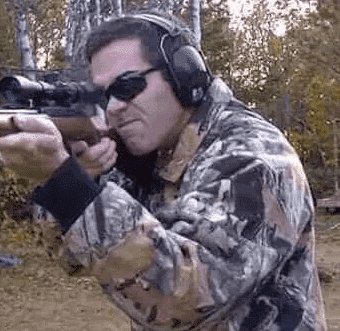Are you searching for the right riflescope for hunting? A riflescope helps you improve your accuracy and precision of your shots. Choosing the right riflescope is important for hunting. In this article, we discuss the factors to consider when choosing a riflescope so you can make an informed decision on the best hunting riflescope.
Fixed vs. Variable Scope
There are two main types of riflescopes: fixed and variable. When choosing a riflescope for hunting, you must determine which one you want.
If the riflescope has one magnification, then it is a fixed scope. However, if it uses more than one, then it is a variable riflescope. A fixed riflescope will have a reading like 3×32 while a variable scope will be displayed as 3-9×40.
You will usually see in the names of scopes the numbers and the letter x. The number(s) before the letter refers to magnification. Hence, if you see 3×32, the 3 which comes before the x means the scope has a magnification of 3. It means the object will be magnified three times.
However, if the numbers are written like 3-9×40, it means that the magnification, which is the number that comes before the x, is 3-9. This means magnification is a range. It varies from 3 to 9. This means the scope is variable scope.
Scope Durability
The durability of a rifle scope is very important. To determine how durable a riflescope is, you want to know about its construction. Learn what materials are used in its construction. Most scopes are made of aircraft-grade aluminum or magnesium alloy. A good hunting scope should have multiple layers of anti-reflective coatings on its lenses. This not only enhances light transmission but also protects the lenses from scratches and abrasions.
Furthermore, pay attention to features like waterproofing and shock resistance. A waterproof scope will ensure it remains functional even in wet weather conditions or if accidentally dropped into water.
Magnification
Magnification is one of the important factors to consider when choosing rifle scopes. It refers to how much closer the target appears than what is seen with the naked eye.
If the scope’s magnification is 4x, this means you can see four times closer than the naked eye. If you primarily use it to hunt small games up to 100 yards, then magnification of 1-4x is ok. If you hunt large game up to 200 yards or hunt in forests and mountains, then magnification of 5-8x will suffice. If you will be targeting shooting beyond 200 yards or in open landscapes like fields and deserts, then you want a magnification of 9-12x.
Objective Lens
The objective lens is responsible for light transmission and is at the end of the scope. The bigger the lens, the brighter and clearer the image will become. However, this doesn’t imply that a larger lens is always the right way to go.
The larger the lens, the heavier the scope will be. Moreover, a larger lens requires taller scope rings, and this makes the scope more susceptible to sunlight reflection which might disclose your position to your target.
You should opt for an objective lens of 28mm (about 1.1 in) or lower if your firearm has low recoil and you will use it in close-range hunting, and it has a low-power scope. Go for an objective lens in the range of 30 – 44m if your rifle has a good bit of recoil and you are using it for low-light hunting. Choose an objective lens of 50mm and above if you are a long-range shooter or using high magnification in low light.
Usually, in the name of the riflescope or in the description, you will see a combination of numbers and letters like 3x40mm. The objective lens is the number after the x.
Windage And Elevation Turrets
The vertical and horizontal adjustments are done using knobs. The windage knob adjusts horizontally (left to right) while the elevation knob adjusts vertically.
Verify that the turrets on the riflescope you choose are reliable and produce a loud “click” sound. Additionally, some riflescopes might have a third knob called a parallax adjustment turret which helps eliminate parallax.
HD Lens
Lastly, opting for a scope with an HD (High Definition) lens can enhance your hunting experience. HD lenses are designed to provide clear and crisp images, even in low light conditions. This means you will be able to see your target more clearly and accurately, increasing your chances of making a successful shot.
Not only does an HD lens improve image clarity, but it also helps to reduce glare and distortion. This is especially beneficial when hunting in bright sunlight or challenging weather conditions.
With an HD lens, you will not have to worry about any unwanted reflections or blurriness affecting your aim. Choosing the perfect hunting scope involves considering several key factors like durability, magnification options suitable for your needs, turret dialing versus ballistic reticles based on preferences and shooting style requirements and opting for HD lenses to enhance visual quality during hunts.
Conclusion
Hunting riflescopes allow you to clearly aim at your target thereby improving your accuracy and precision. When searching for a hunting riflescope, there are some factors to take into consideration. In this article, we discussed the main factors to consider when choosing a riflescope for your outdoor activities.

